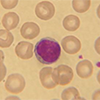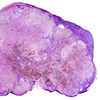Angiotensin Converting Enzyme (ACE)
Specimen Volume
1 mL bloodSpecimen Transport
Not applicable
Sample Preparation
Centrifuge
Turnaround Time
7 daysSample Processing In Laboratory
No special requirements
Sample Stability
Stable for 30 days at 2-8°C and six months at -20 ºC.General Information
Elevated levels of ACE occur in the serum of patients with active sarcoidosis, tuberculosis, Gaucher's (a lysosomal storage disease), leprosy, many other pathologic conditions including lung and liver disease, and occasionally in premature infants with respiratory distress syndrome. ACE levels are also raised in hyperthyroidism.
In 40 to 60% of patients with sarcoidosis, ACE activity is increased. However, a single ACE measurement does not necessarily predict the presence or extent of lung injury. The main clinical use of ACE measurements is of serial levels in therapeutic monitoring and as a warning of possible relapse.
Patient Preparation
None
Notes
Do not use EDTA plasma as EDTA inhibits ACE activity. Serum (yellow top/red top) is the only suitable sample type for this assay.
Haemolysis, lipaemia and jaundice interfere
Reference Range
Adults: 20-70 IU/L
(Source: Buhlmann Laboratories)
Serum levels in individuals under 18 years of age are substantially higher and more variable than in adults.
Source of Reference Range
Buhlmann laboratoriesSpecifications
- EQA Status: WEQAS
- EQAS Scheme: Yes








